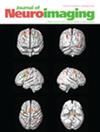Phosphotungstic Acid Staining to Visualize the Vagus Nerve Perineurium Using Micro-CT
Abstract
Background and Purpose
Peripheral nerve stimulation is approved by the US Food and Drug Administration for treating various disorders, but it is often limited by side effects, highlighting the need for a clear understanding of fascicular and fiber organization to design selective therapies. Micro-CT imaging of contrast-stained nerves enables the visualization of tissue microstructures, such as the fascicular perineurium and vasculature. In this work, we evaluated phosphotungstic acid (PTA) as a contrast agent and assessed its compatibility with downstream histology.
Methods
Human vagus nerve samples were collected from three embalmed cadavers and subjected to three different staining methods, followed by micro-CT imaging: Lugol's iodine, osmium tetroxide, and PTA. Contrast ratios of adjacent tissue microstructures (perineurium, interfascicular epineurium, and fascicle) were quantified for each stain and compared. We further developed a pipeline to optimize micro-CT scan acquisition parameters based on objective metrics for sharpness, noise, and pixel saturation. The PTA-stained samples underwent subsequent histological processing and staining with hematoxylin and eosin, Masson's trichrome, and immunohistochemistry and were assessed for tissue degradation.
Results
PTA enhanced the visualization of perineurium, providing high contrast ratios compared to iodine and osmium tetroxide. Optimized scanning parameters for PTA-stained nerves (55 kV and 109 µA) effectively balanced noise and sharpness. While we found that PTA is generally nondestructive for downstream histology, higher concentrations and longer exposure could alter the optical density of nuclei and affect stain differentiation in special stains.
Conclusion
PTA serves as a valuable micro-CT contrast agent for nerve imaging, effective in visualizing the perineurium with minimal impact on histological integrity.


 求助内容:
求助内容: 应助结果提醒方式:
应助结果提醒方式:


